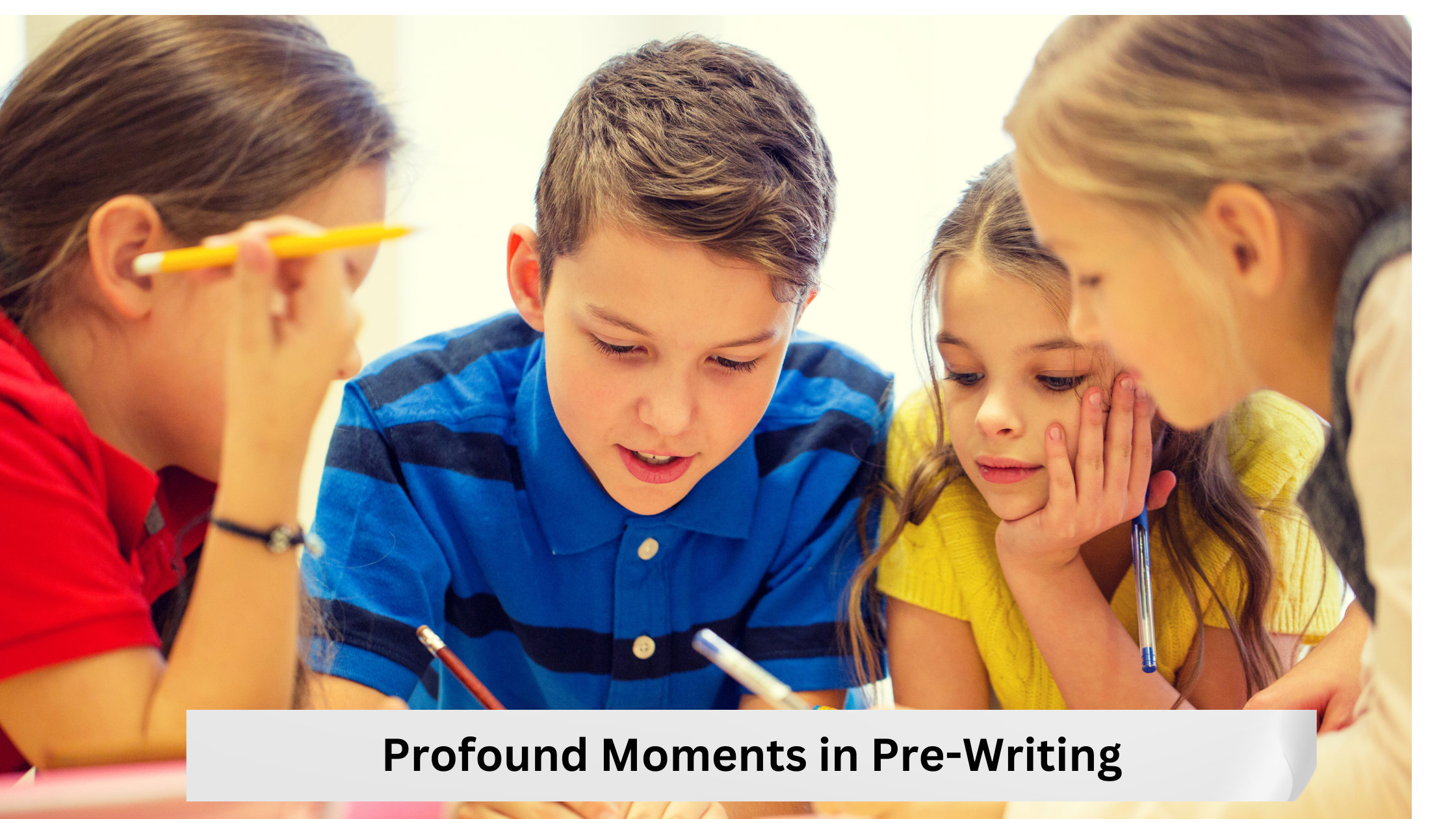C.S. Lewis is quoted, “You can make anything by writing.”
I believe writing is a gateway to sharing our stories, developing creativity and innovative thinking, and showing our passions. But I often wonder, how do I yield the most powerful pieces of writing written by passionate authors?
I think one key is in the prewriting.
I would bet that the majority of us would say that we believe prewriting is important. I believe that most of us would claim we provide time for students to develop their topics, create ideas, and map their thinking. I know for a fact that many of us use graphic organizers to support our students in their earliest stage of the writing process.
Prewriting Defined
Prewriting is the earliest stage of the writing process; which often includes brainstorming, note taking, word mapping, and generating ideas. This process allows writers to develop thoughts, create an organizational structure, and know the focus for their piece of writing. Think of the prewriting as a roadmap.
My Personal Journey
Typically, for any new unit, we spend minimal time at the beginning of the learning, usually a mini-lesson and some brainstorming sessions, followed by an organizer to structure our plan. And then, we are off to drafting, often glazing over the prewriting. I often feel the pressure to rush through this stage and get to drafting.
Recently, my 5th graders embarked on a fantasy unit. Like most units, I started with prewriting. However, this unit has yielded such different results than others I have journeyed through. Interestingly enough, in this unit, we have spent days upon days in the pre-writing stages. We are weeks into this unit, and my students are just now beginning to draft their stories- and they have so much to say! They know their story-line, their conflicts, their characters, their settings, and their character’s inner struggle to achieve the outcome…and they haven’t even written it yet.
Their engagement is high. Their focus is intense. Their stories are powerful, deep, and authentic. But, what changed? The time spent in prewriting.
This unit began with what my grade level team called “playground space.” Students experimenting with types of world building, creating maps, designing their settings, and integrating their creatures/characters. Then, students focused on character development, plotting their story elements, building scene by scene on notecards. In each scene, students broke down the actions; as well as focusing on the characters’ words, actions, feelings, and thoughts. Students processed who their secondary characters would be- would it be a villain or a side-kick, an antagonist or a teammate?
When my students went to draft, they were actually able to do just that…write and write. They didn’t have to think about what was next, or how the conflict would arise, or how the characters would overcome their obstacles to change from beginning to end. They already knew it all…just from the process of prewriting. Spending this time in the prewriting is showing agency in their work, and a deep understanding of narrative literary elements. I’m enthused to see their end results, but for now, the process is proving encouraging.
Benefits of Prewriting
-Explore various topics and ideas
-Organize thoughts
-Create a plan for writing
-Clarity for students
-Creativity
-Develop their audience
-Narrow focus for writing
-Opportunities for story-mapping
-Connect reading and writing skills
-Lowers writing anxiety
Key Takeaway
My takeaway from this personal journey and my advice to you…I think so often we view prewriting as a quick brainstorming session (I know I did). We might even glaze over it, but I am learning that spending more authentic time here ultimately helps my writers yield those powerful pieces of writing that I am truly looking for.


